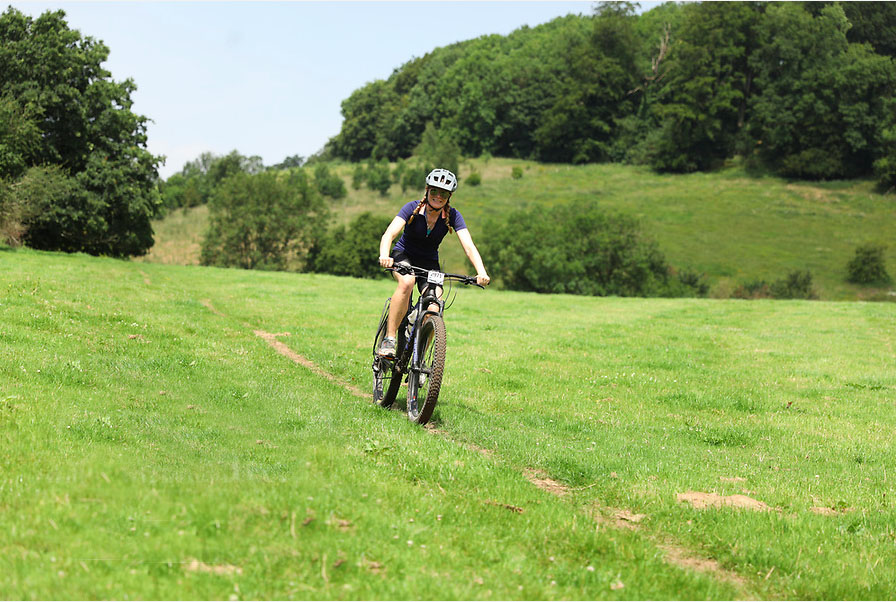Adventure cycling falls into two camps. There are adventures you purposefully prepare for and adventures that happen by accident.
My bikepacking tour of Cuba definitely fell into the latter camp.
In search of winter sun and a stress-free Christmas, my sister and I planned a two-week trip around the western cape of Cuba.
What could be better than pedalling along tropical beaches with countless piña coladas every night? Many people recommend Cuba for chilled-out cycling tours, citing the lack of cars and the temperate weather.
Our route was simple enough. We would set out west from Havana, heading through the mountains of Vinales to Cuba's westernmost cape and a beach where turtles hatch their eggs, before riding back to Havana again via the notoriously remote north road.
Cuba is a fabulous place to ride a bike. It has gloriously traffic-free roads that stretch in all directions, and there is great scenery along the way, with coral reefs, volcanic mountains and interesting cities.
But, as we learned, it presents challenges that make a two-week bikepacking tour something of an unexpected adventure.
1. There’s always a way (if you have the will)

Cuba is (famously) a socialist country, and has been under a US embargo for almost 50 years, meaning you are very unlikely to have access to anything new.
This is why the streets are still dotted with cars from the 1960s, and there isn’t much internet across the country.
This became blindingly apparent when my chain snapped in the middle of a jungle.
Luckily, a farmer came to our aid and told his buddy, who told his buddy, who managed to fix it using an old nail and a big rock.
Is this the recommended way to fix a chain? No. Did I cover my eyes as he was hammering away at the chain? Yes… but, amazingly, it worked extremely well.
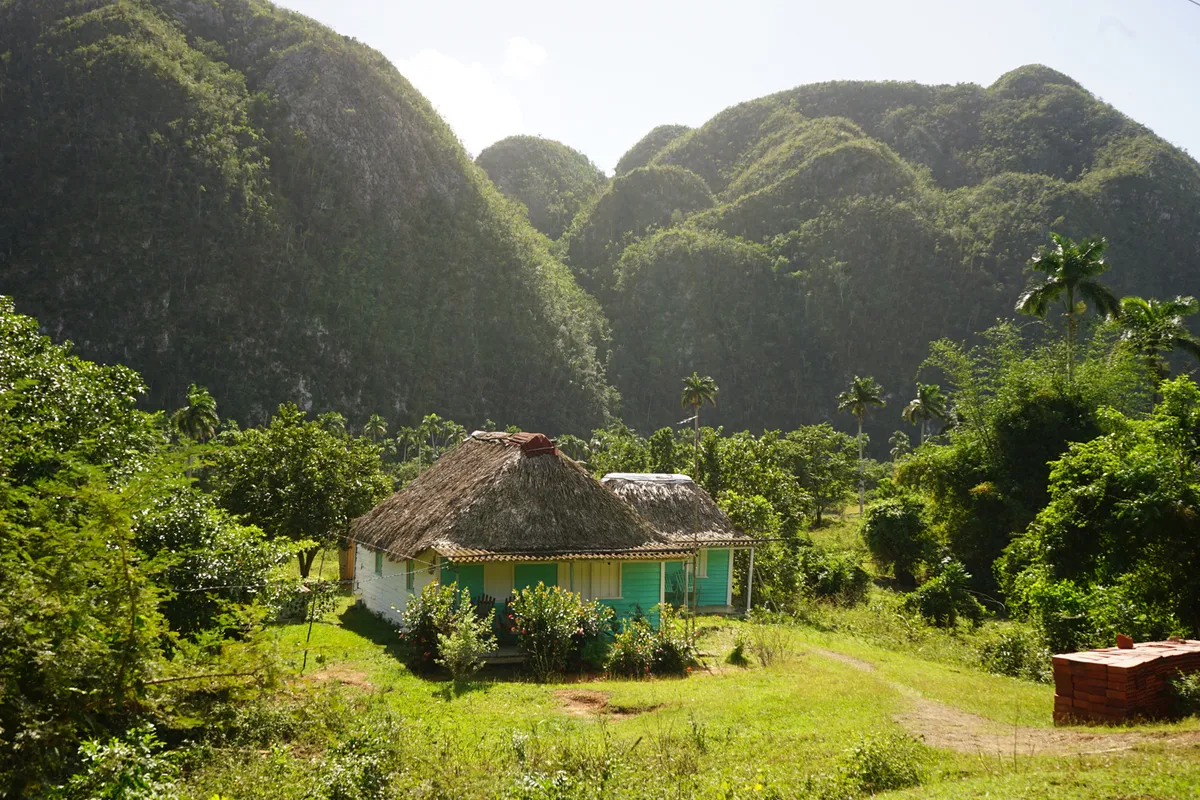
Later, my sister’s rack broke. Half a village came out to help source old bits of metal and various bolts to fit the parts back together, with seemingly no soldering irons and no new racks anywhere in the entire country.
Once you started looking, there were thousands of bikes lining Cuba’s city streets, held together with shoestrings and tape, and still managing miles every day.
It was cool to be reminded that you don’t need the perfect or newest tools, kit or bikes to keep the pedals turning.
2. Never turn down the opportunity to eat
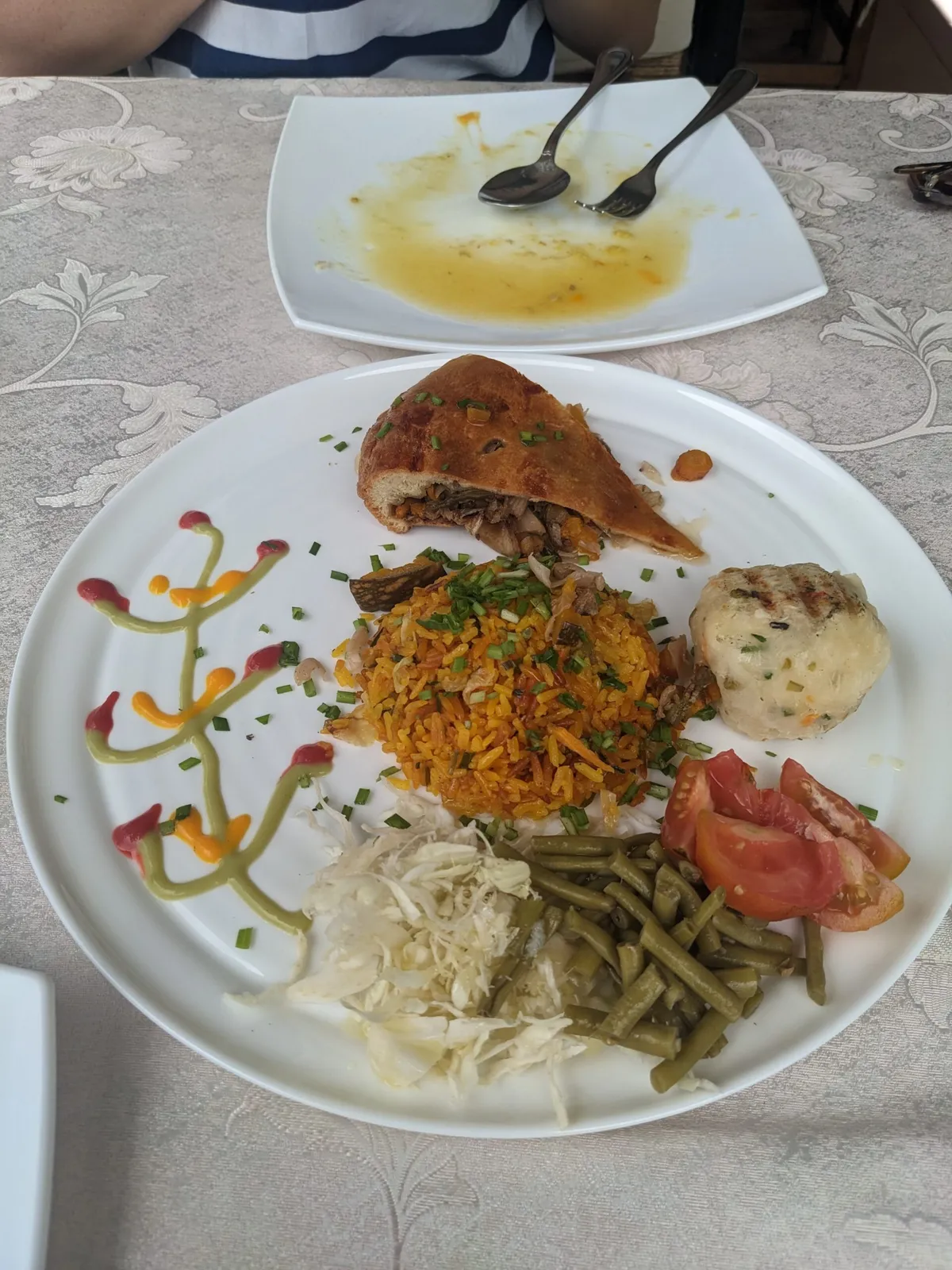
Picture this. It’s Christmas Day, lunchtime. You’re on a tropical beach. There’s a gale-force wind and tropical storms. You’re hiding beneath a palm without food for 50 miles.
You make do with stale biscuits that have sat in the bottom of your saddlebag for the last 300 potholed miles. The biscuits are so crushed they resemble bags of sand, and the only way to eat them is to try to down the crumbs like a shot of dust.
If that doesn’t sound like the best Christmas ever… never forget to take food!
Of course, this is a great tip for every cycling adventure. But in Cuba, especially, which is struggling with food shortages at the moment, we quickly learned to say yes to food wherever we could find it – be that roadside ‘pizzas’ for 20p, freshly picked bananas or several Mr Whippy-style ice creams at once.
If you are planning on visiting Cuba, I recommend trying some ‘turron de mani’ from any roadside stall. It’s made purely from peanuts and sugar ground together into a bar, which is dream food for any hungry cyclist.
3. Local secrets make for the best days

We hired bikes from a rental company in the centre of Havana and asked them for route recommendations.
I’m so glad we did. They immediately pulled out worn paper maps and showed us roads, which became our favourites.
Instead of highways, we were riding on meandering mountain roads that were so quiet we quite frequently came close to crashing into families of pigs that were stretched out on the sun-warmed tarmac, taking a nap.
Further on, we’d stop for recommendations at villages, and locals told us about secret cenote swimming spots or the beekeeper who was selling fresh honey in old Coke bottles from his living room.
An even better idea would be to hire a guide for the ride, who knows all the best restaurants, sleeping spots and the constantly fluctuating exchange rate. If I was going again, I would absolutely do this.
4. There’s light at the end of the puddle…
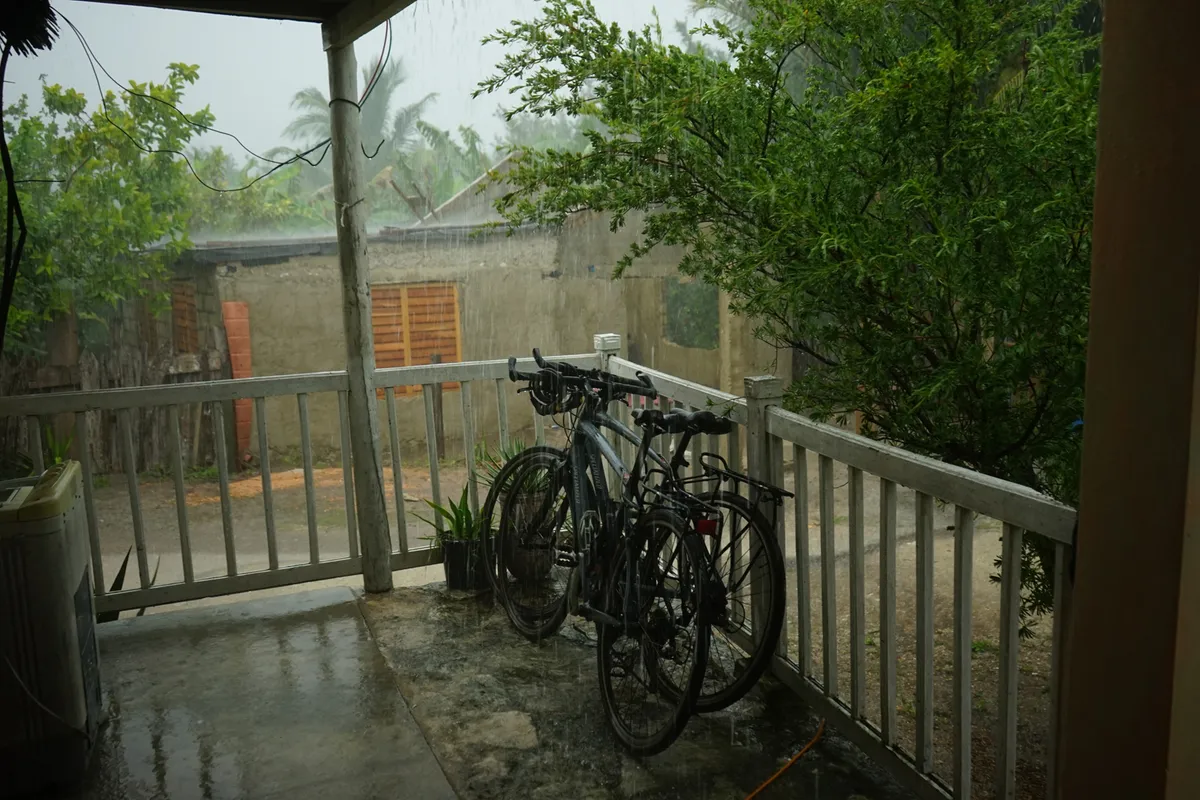
Thanks to the tropical storms, there was an unusual amount of rain when we were in Cuba.
We spent a disproportionate amount of time dragging our loaded bikes through thick mud, which wasn’t dissimilar from riding in the UK.
We faced many roads covered with puddles that stretched as far as the eye could see.
Now, in the UK you generally know these will come to an end around the next corner and won’t get too deep. Cuba was another story. Unseen potholes sent the bikes underwater several times, and on one memorable occasion, we ended up wading waist-deep through flood waters that seeped into all of our bags.

I had no idea bikes float if you take them deep enough (thank you, air in my tyres), but I wouldn’t recommend trying this out yourself. If you do, turn the bike upside down and let the water run out of the frame before you ride another 50 miles.
5. Old-fashioned still flies
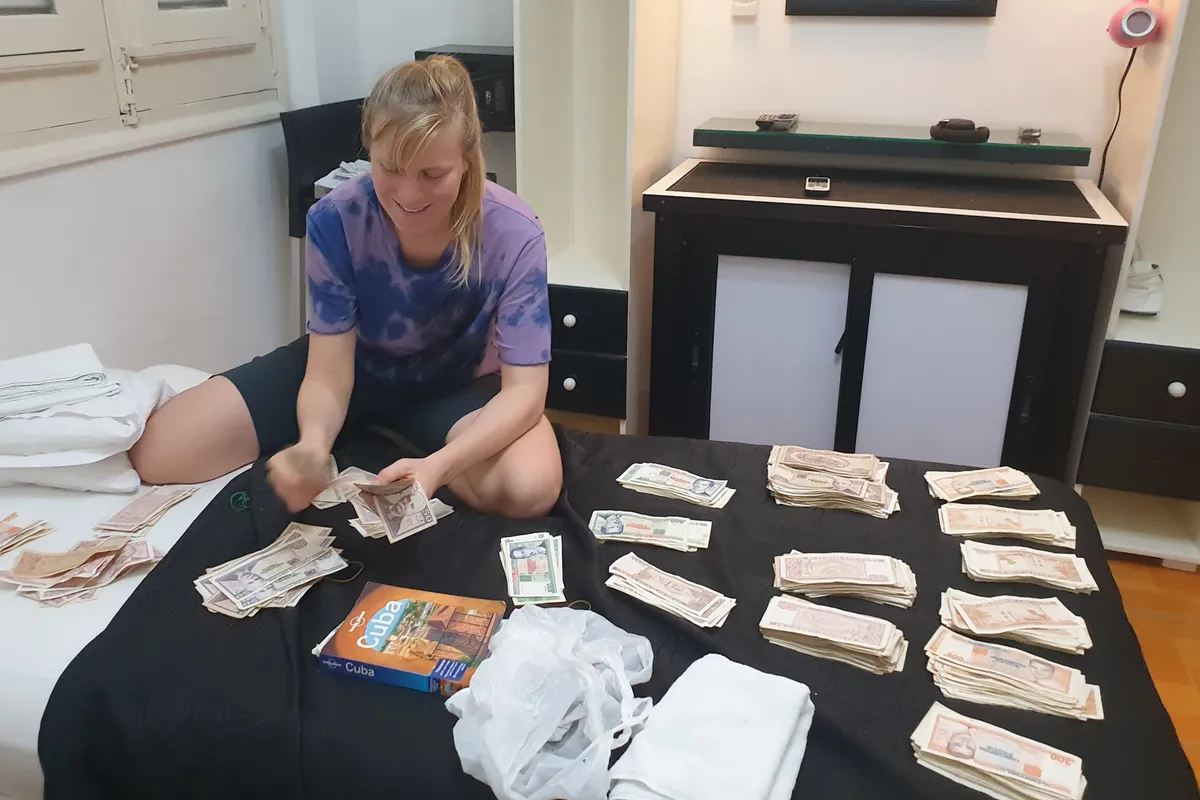
As a country with barely any cash machines or internet anywhere, we found ourselves resorting to the old-fashioned way of cycle touring.
We used a guidebook, a paper map and rolls of pesos hidden in our handlebar ends, bags and jersey pockets. Who would have foreseen an adventure in 2024 would rely on paper to survive?
But, I’m happy to report paper still works pretty well and helped us navigate for the whole trip (signposts are kind of useful too – who could have guessed?).
It did feel sketchy to ride around with so much cash on us, but Cuba is extremely safe for tourists and we never felt in danger.
6. Enjoy the chaos
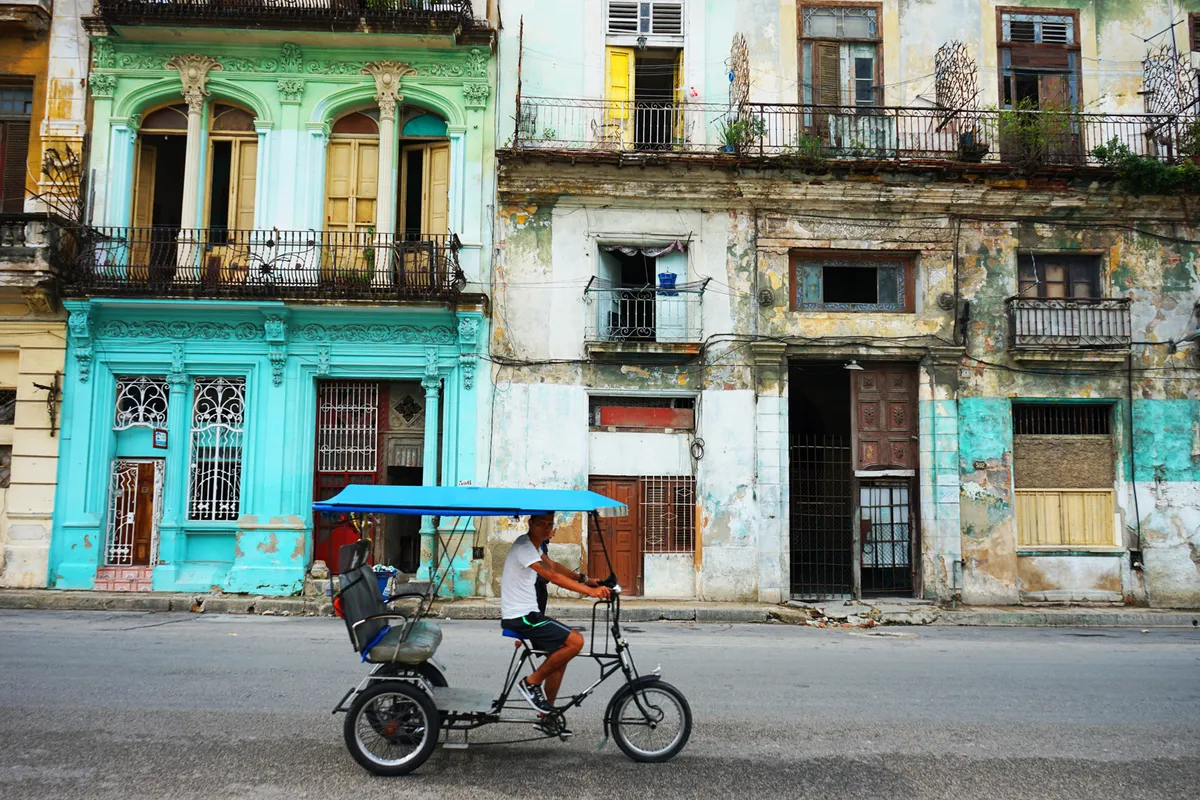
Cuba is chaotic, it’s true. Starting on the Cuban roads was something of a challenge. There might not be that many cars, but there are a huge number of road users.
We saw everything from wild dogs to Soviet-era lorries, electric mopeds with four people clinging on, families of pigs, falling-apart buses, horses and carts, three-wheeled wagons filled with sugar cane and a woman sitting on the back of an electric bike, clutching a full wedding cake.
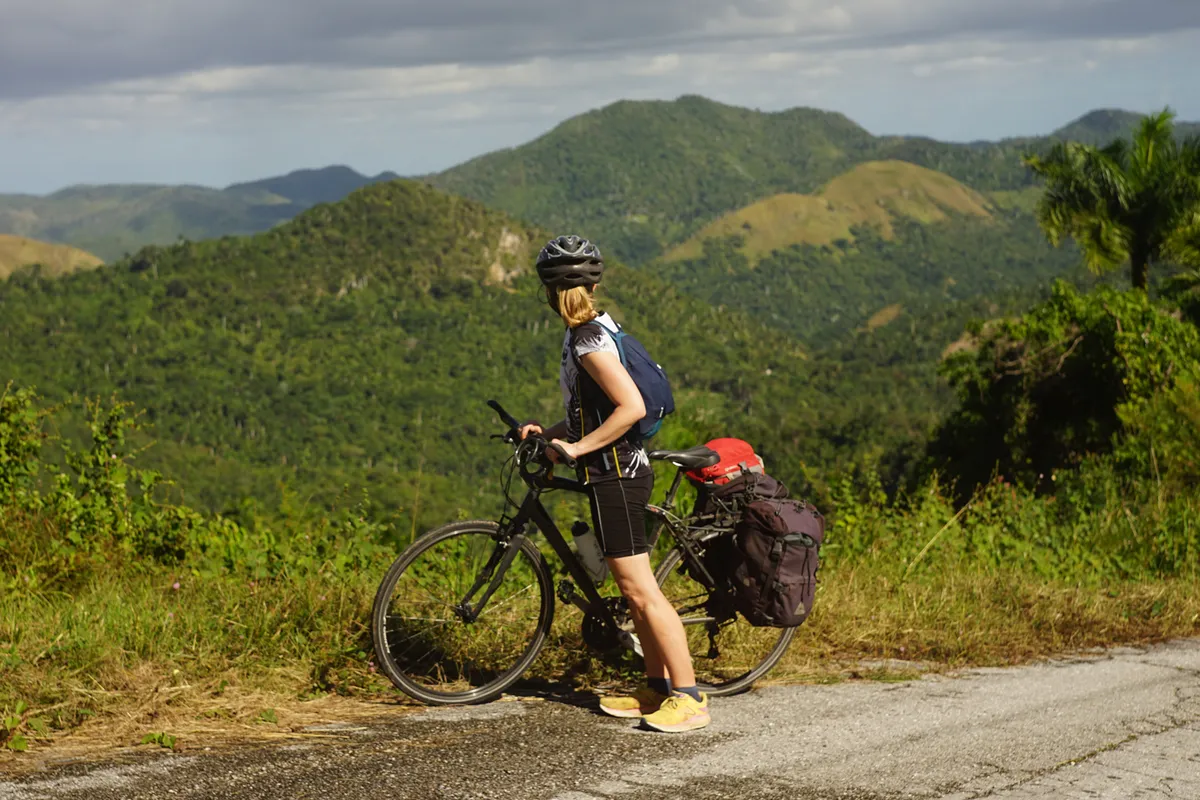
Along with the potholes, the plethora of beeping horns and people weaving all over the road to say hello to their friends, it made for nervous cycling at first.
However, after a few days, we started to get into the swing of it, and soon we were joining in with the pothole dodging, waving and bungee-ing silly things to our racks.
Cuba was a great place to cycle and our Christmas there – battling tropical storms, navigating with paper maps and embracing the chaos – made for a great adventure.
